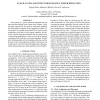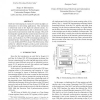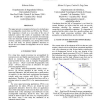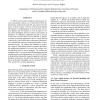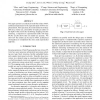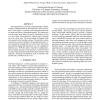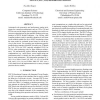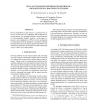FPL
2009
Springer
14 years 4 months ago
2009
Springer
FPL
2009
Springer
14 years 4 months ago
2009
Springer
Clock gating is a power reduction technique that has been used successfully in the custom ASIC domain. Clock and logic signal power are saved by temporarily disabling the clock si...
FPL
2009
Springer
14 years 4 months ago
2009
Springer
Hardware-timestamping is essential for achieving tight synchronization in networking applications. This mechanism is selectively used on few high-cost tailored systems. Actual μP...
FPL
2009
Springer
14 years 4 months ago
2009
Springer
This paper presents a comparison between two technologies for reconfigurable circuits that are FPGA'se the FPAA's. The comparison is based on a case study of the area of...
FPL
2009
Springer
14 years 4 months ago
2009
Springer
Recent computing-oriented FPGAs feature DSP blocks including small embedded multipliers. A large integer multiplier, for instance for a double-precision floating-point multiplier...
FPL
2009
Springer
14 years 4 months ago
2009
Springer
As FPGA-based systems including soft processors become increasingly common, we are motivated to better understand the architectural trade-offs and improve the efficiency of these...
FPL
2009
Springer
14 years 4 months ago
2009
Springer
This paper presents an analytical model that relates FPGA architectural parameters to the expected speed of FPGA implementation. More precisely, the model relates the lookuptable ...
FPL
2009
Springer
14 years 4 months ago
2009
Springer
Self-organization is a natural concept that helps complex systems to adapt themselves autonomically to their environment. In this paper, we present a self-organizing framework for...
FPL
2009
Springer
14 years 4 months ago
2009
Springer
Automated code generation and performance tuning techniques for concurrent architectures such as GPUs, Cell and FPGAs can provide integer factor speedups over multi-core processor...
FPL
2009
Springer
14 years 4 months ago
2009
Springer
Power consumption in data centres is a growing issue as the cost of the power for computation and cooling has become dominant. An emerging challenge is the development of “envir...

